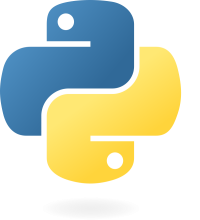Understanding Python
Python is a widely-used programming language created by Guido van Rossum and was first released in 1991. Its versatility makes it an excellent choice for various applications such as web development, software creation, mathematics, and system scripting.
Applications of Python
- Web Development: Python is employed server-side to develop web applications.
- Software Development: It aids in creating and managing workflows alongside other software.
- Database Connectivity: Python can interface with database systems, and is capable of reading and modifying files.
- Big Data Handling: It is used to manage large datasets and perform complex mathematical operations.
- Rapid Prototyping: Python allows for quick prototyping and is also suitable for production-level software development.
Advantages of Using Python
- Compatible with multiple platforms, including Windows, Mac, Linux, and Raspberry Pi.
- Boasts a simple, English-like syntax, making it easier to learn and use.
- Enables developers to write concise and efficient programs.
- Operates on an interpreter system, allowing for immediate execution of code, which accelerates prototyping.
- Supports procedural, object-oriented, and functional programming paradigms.
Important Information
The latest major version is Python 3, which will be used throughout this tutorial. Despite Python 2 still being popular, it only receives security updates and no new features. In this tutorial, we will write Python code in a text editor. However, for larger projects, Integrated Development Environments (IDEs) like Thonny, PyCharm, NetBeans, or Eclipse can be beneficial.
Python Syntax Compared to Other Languages
Python is designed with readability in mind and shares similarities with the English language, influenced by mathematical concepts. Unlike other programming languages that use semicolons or parentheses, Python uses new lines to end a command. Indentation with whitespace is crucial in Python to define the scope of loops, functions, and classes, whereas other languages might use curly brackets for this purpose.
As we progress through this tutorial, you will understand why Python is a favored choice among developers and how you can leverage its features for your projects.
